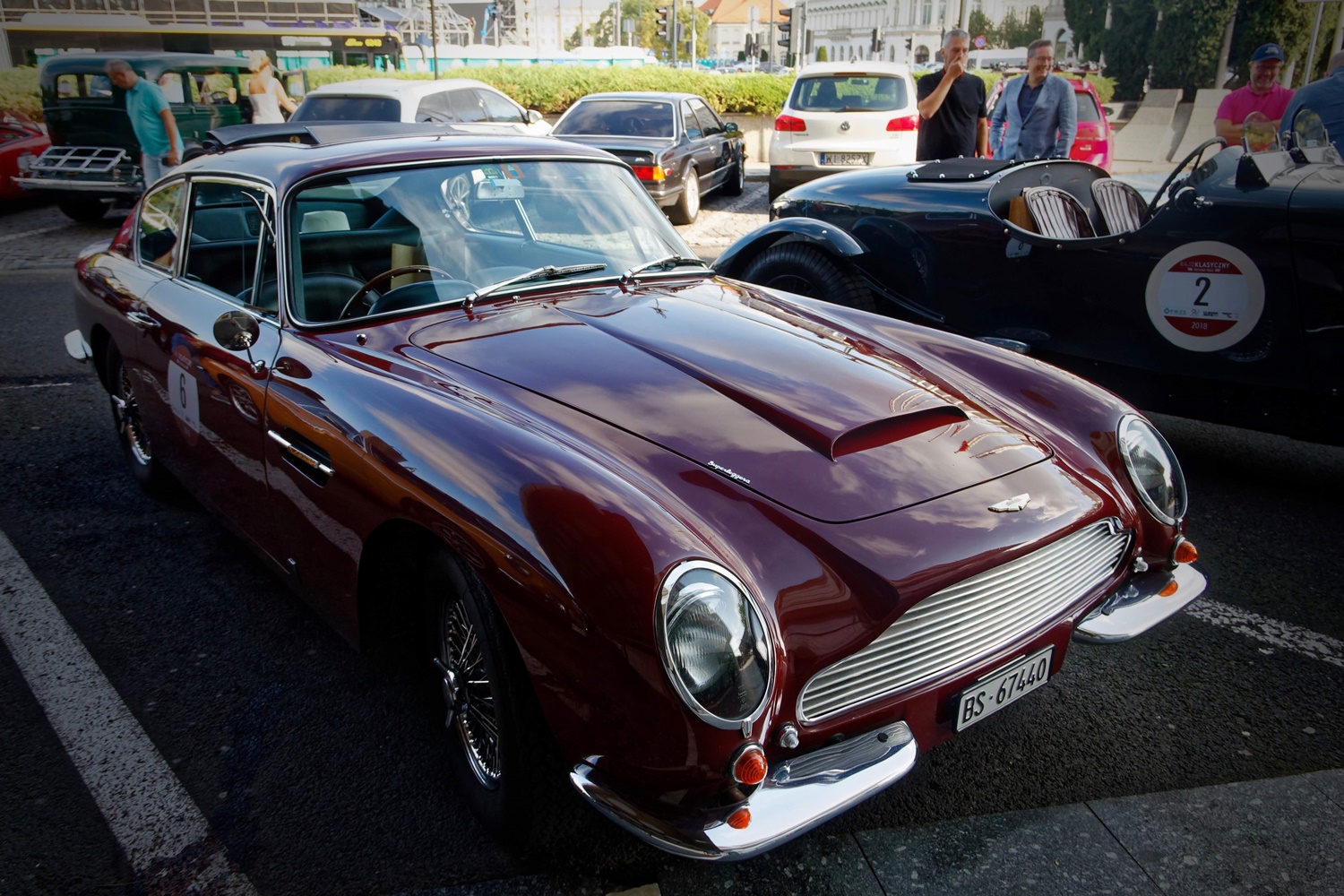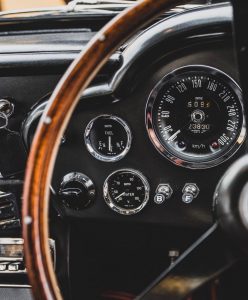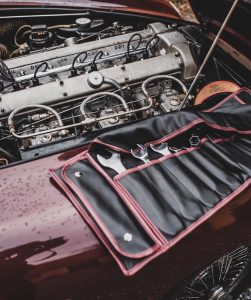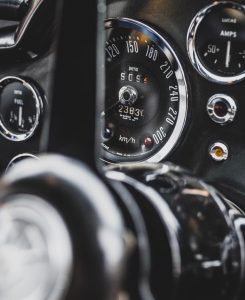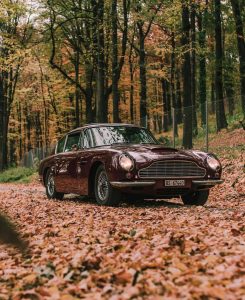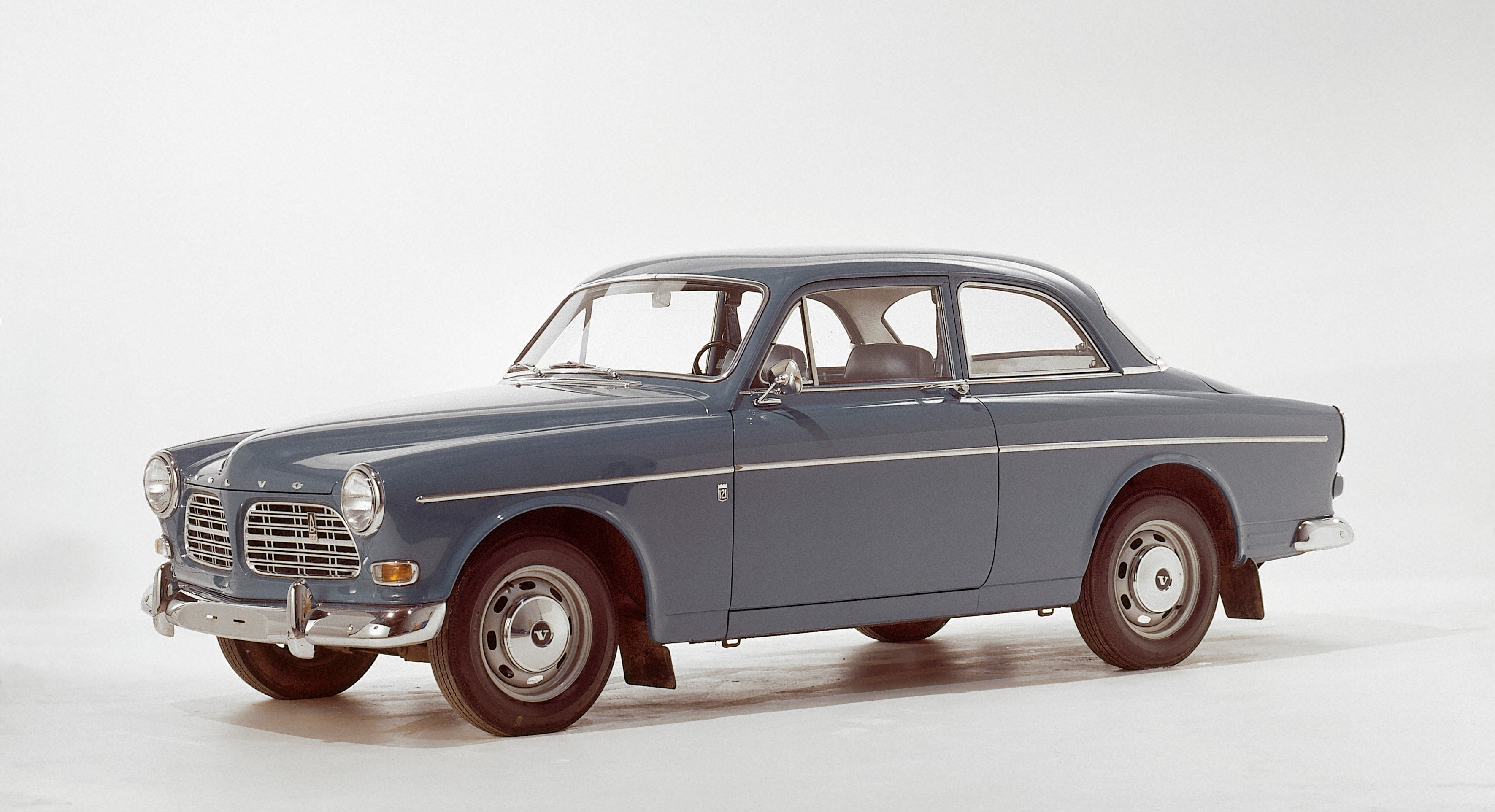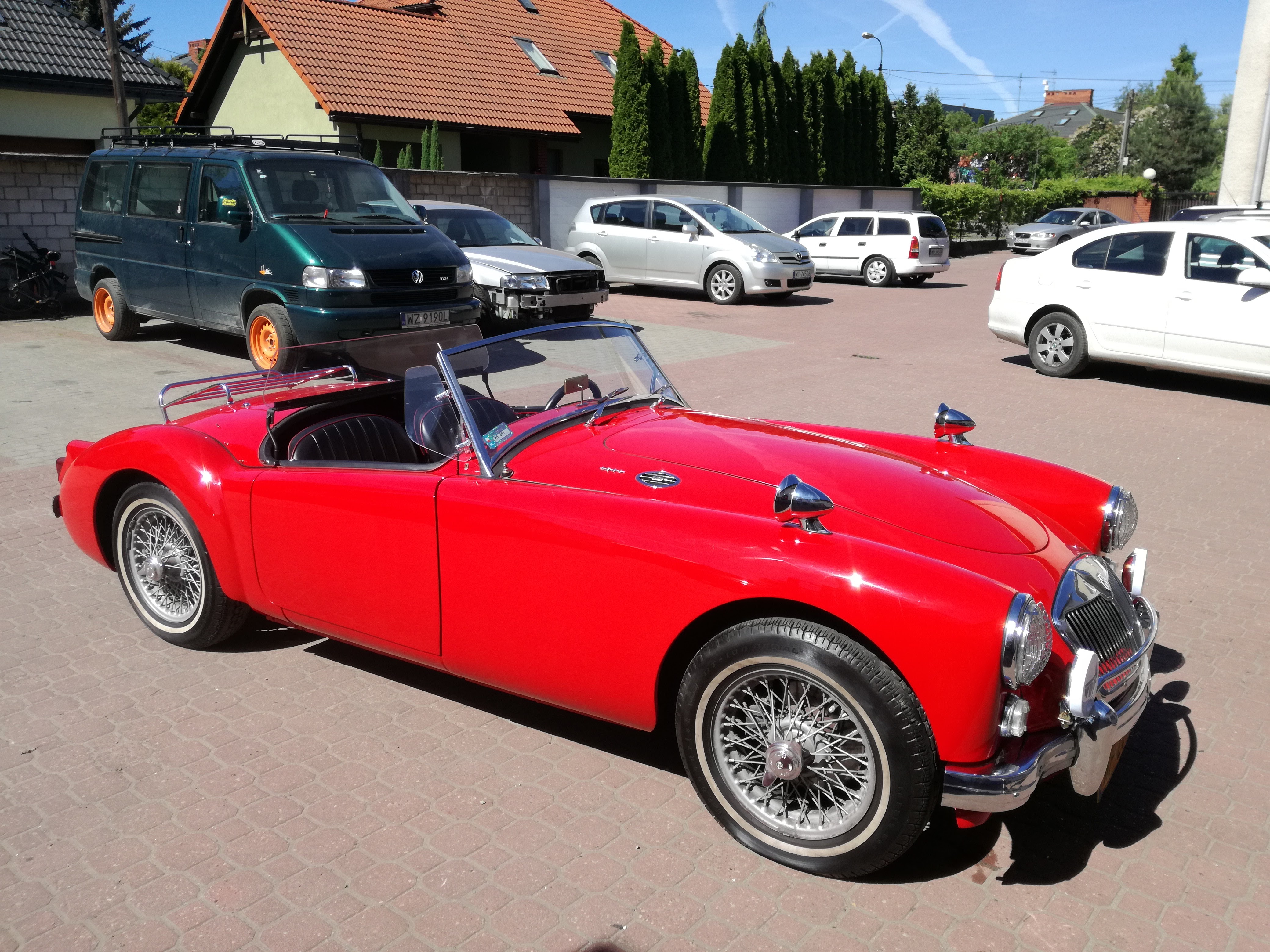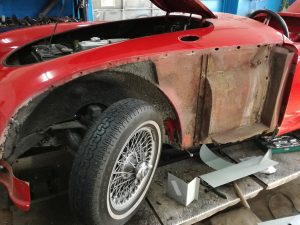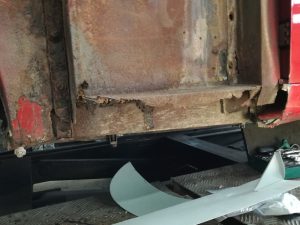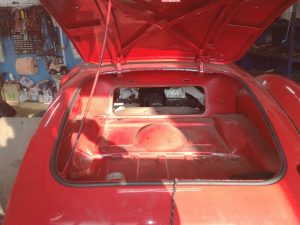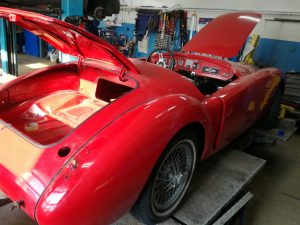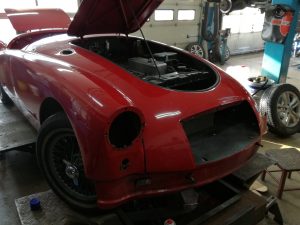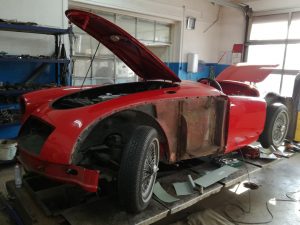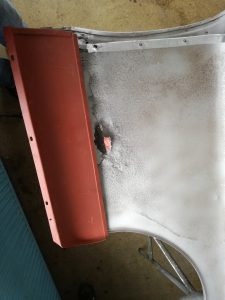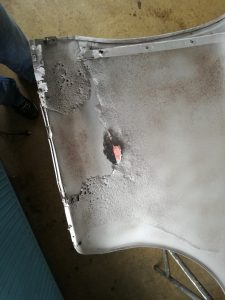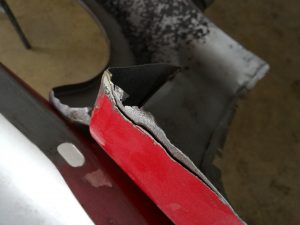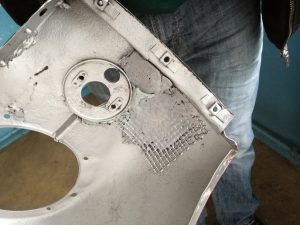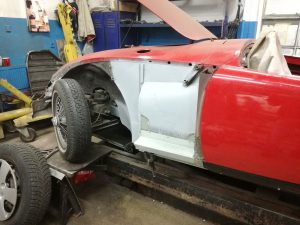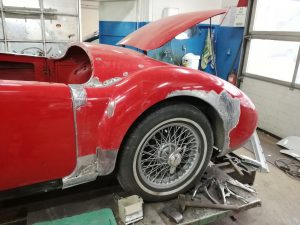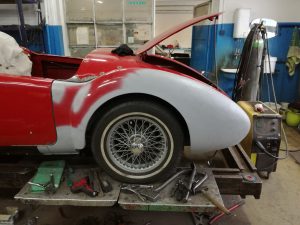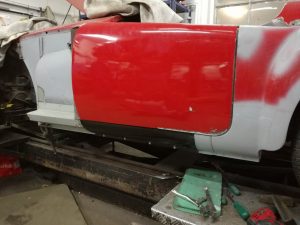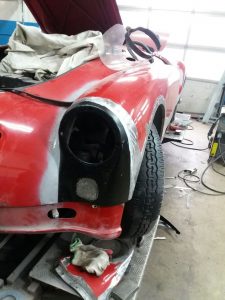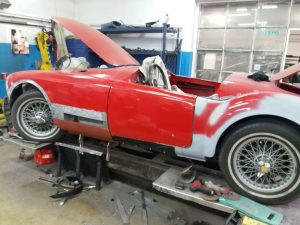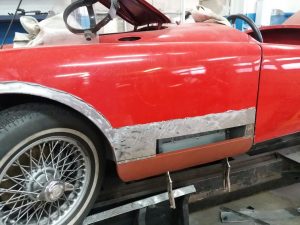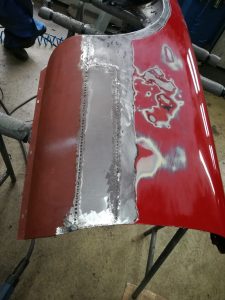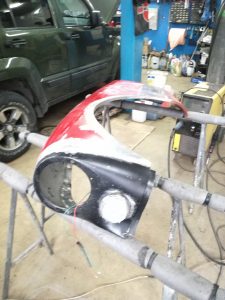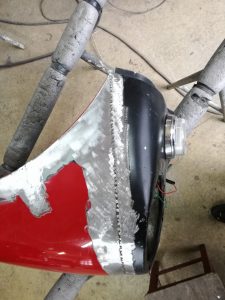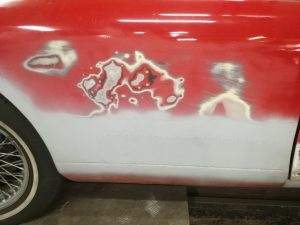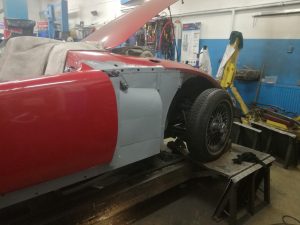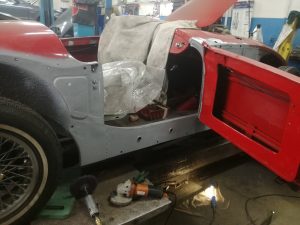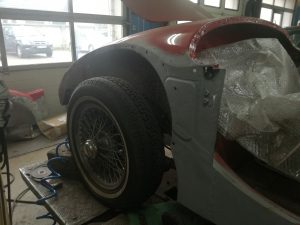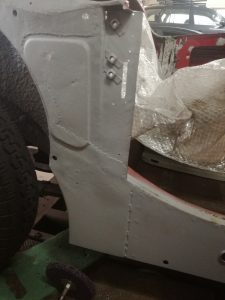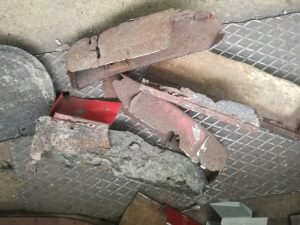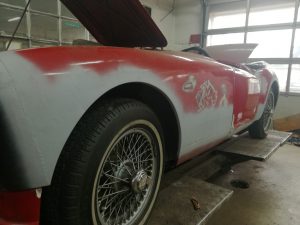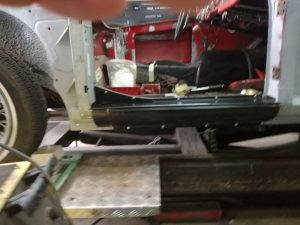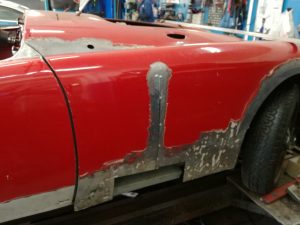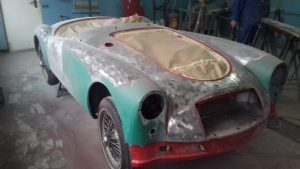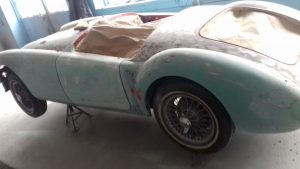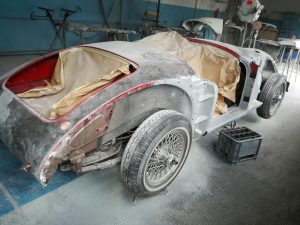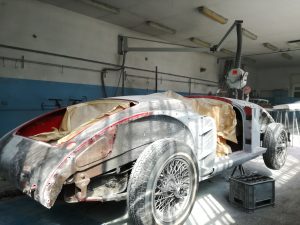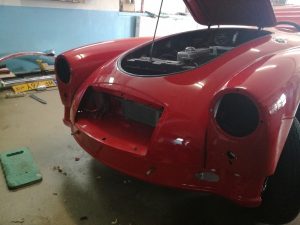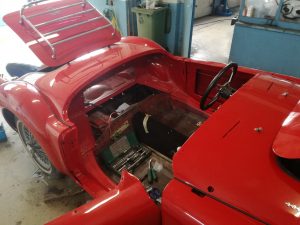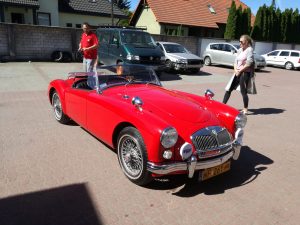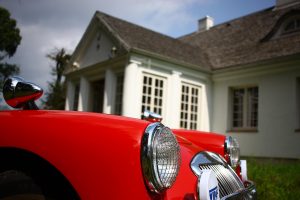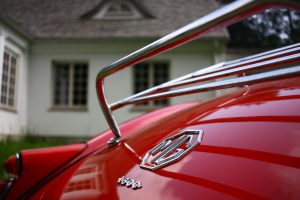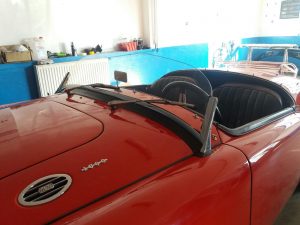1960's Classic Cars
See all of the beautiful 1960’s cars that belong to members of the Casual Car Club.
Aston Martin DB6
The Aston Martin DB6 is a grand tourer made by British car manufacturer Aston Martin. Produced from September 1965 to January 1971, the DB6 had the longest production run up to that date of any Aston Martin model. The DB6 succeeded the Aston Martin DB5 and featured improved aerodynamics and specification over its predecessor.
The DB6 is powered by the 3,995 cc (243.8 cu in) twin-overhead camshaft (DOHC), in-line six-cylinder Aston Martin engine designed by Tadek Marek. The engine, continued with its triple SU carb setup[10] producing 282 bhp (210 kW; 286 PS) at 5,500 rpm; the Vantage engine option is quoted at 325 bhp (242 kW; 330 PS) against the 314 bhp (234 kW; 318 PS) of the DB5. Although the weight of the DB6 was approximately 17 lb (7.7 kg) heavier than its predecessor, the stability at high speed, added luggage capacity and comforts for passengers in this grand tourer more than offset any imperceptible loss in performance caused by additional weight. The rear suspension used helical coil springs with ride control that was adjustable from inside the car.
Volvo Amazon
The Volvo Amazon was a mid-size car manufactured and marketed by Volvo Cars from 1956 to 1970 and introduced in the USA as the 122S at the New York International Auto Show in April 1959.
The Amazon shared the wheelbase, tall posture and high H-point seating of its predecessor, the PV and was offered in two-door sedan, four-door sedan, and five-door wagon body styles. In 1959 Volvo became the world’s first manufacturer to provide front seat belts as standard equipment — by providing them on all Amazon models, including the export models — and later becoming the first car featuring three-point seat belts as standard equipment.
When introduced, the car was named the Amason (with an ‘s’), deriving from the fierce female warriors of Greek mythology, the Amazons. German motorcycle manufacturer Kreidler had already registered the name, and the two companies finally agreed that Volvo could only use the name domestically (i.e., within Sweden), modifying the spelling to Amazon. Subsequently, Volvo began its tri-digit nomenclature and the line became known as the 120 Series.
The Amazon was originally manufactured at Volvo’s Lundby plant in Gothenburg and subsequently at the company’s Torslandaverken plant, which began operating in 1964. By the end of production, 234,653 four-door models, 359,917 two-door models and 73,220 station wagons had been produced, of which 60% were exported; for a total of 667,791 vehicles.
MG MGA 1600
The MGA is a sports car that was produced by MG from 1955 to 1962.
The MGA replaced the MG TF 1500 Midget and represented a complete styling break from MG’s earlier sports cars. Announced on 26 September 1955 the car was officially launched at the Frankfurt Motor Show. A total of 101,081 units were sold through the end of production in July 1962, the vast majority of which were exported. Only 5869 cars were sold on the home market, the lowest percentage of any British car. It was replaced by the MGB.
The MGA design dates back to 1951, when MG designer Syd Enever created a streamlined body for George Philips’ TD Le Mans car. The problem with this car was the high seating position of the driver because of the limitations of using the TD chassis. A new chassis was designed with the side members further apart and the floor attached to the bottom rather than the top of the frame sections. A prototype was built and shown to the BMC chairman Leonard Lord. He turned down the idea of producing the new car as he had just signed a deal with Donald Healey to produce Austin-Healey cars two weeks before. Falling sales of the traditional MG models caused a change of heart, and the car, initially to be called the UA-series, was brought back. As it was so different from the older MG models it was called the MGA, the “first of a new line" to quote the contemporary advertising. There was also a new engine available, therefore the car did not have the originally intended XPAG unit but was fitted with the BMC corporate B-Series type allowing a lower bonnet line. The MGA convertible had no exterior door handles, however the coupe had door handles.
It was a body-on-frame design and used the straight-4 “B series" engine from the MG Magnette saloon driving the rear wheels through a four-speed gearbox. Suspension was independent with coil springs and wishbones at the front and a rigid axle with semi-elliptic springs at the rear. Steering was by rack and pinion. The car was available with either wire-spoked or steel-disc road wheels.
Casual Car Club Blog
On our blog you can see lots of images and stories of our trips and car rally’s.
